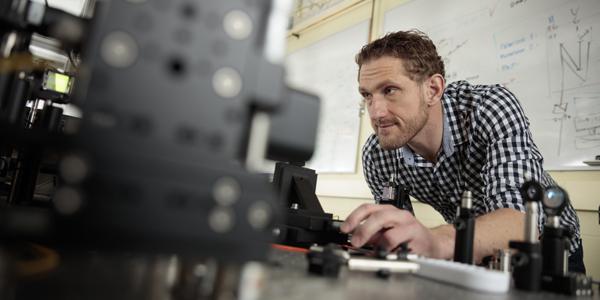Canada Looks to Unmask Stealth in the Arctic
The Canadian Department of National Defence is funding researchers at the University of Waterloo, Ontario, C$2.7 million to develop a new type of radar that can operate effectively in harsh Arctic conditions using quantum light. The new technology also would be able to unmask stealth aircraft, according to university scientists.
The driving force for the effort is polar interference from space weather such as solar flares, radiation storms and geomagnetic bursts, according to Jonathan Baugh, associate professor and member of the university’s Institute for Quantum Computing. The aging North Warning System early warning radar, run by Canada and the United States under the aegis of NORAD, encounters these types of interference as it scans the Arctic region north of Canada and Alaska. It may need replacing as soon as 2025, university officials say.
Their solution is quantum illumination, which would cut through heavy background noise to isolate and detect objects accurately, including stealth vehicles designed to be low-observable to conventional radar. Michael Reimer, assistant professor of electrical and computer engineering at Waterloo, and a quantum researcher, says the key is to create a quantum light source that harnesses quantum entanglement to achieve quantum illumination. The new radar would emit large streams of entangled photon pairs.
Baugh notes that while this approach has been achieved in the laboratory, it would have to be scaled up to be useful in actual field operations. Reimer adds that he has been generating quantum entangled photons for a decade and his laboratory now is creating the next-generation quantum light source. It is aiming at generating 1 billion photons a second, which is 1,000 times more than currently possible, he observes.
At the heart of it is a light-emitting diode where engineers control the number of electrons, which allows operators to control the number of photons. Ultimately, the long-distance quantum radar unit could be powered by a battery, unlike a bulky laser detection system. In addition to detection of missiles incoming over the arctic region, the radar could serve in search and rescue roles, Reimer offers. Its ability to detect stealth air vehicles could be achieved without the quantum radar itself being detected, he adds.
The C$2.7 million funding is part of Canada’s All Domain Situational Awareness (ADSA) program, which is spending a total of C$130 million through 2020. This includes efforts to modernize NORAD’s northern assets.





Comments